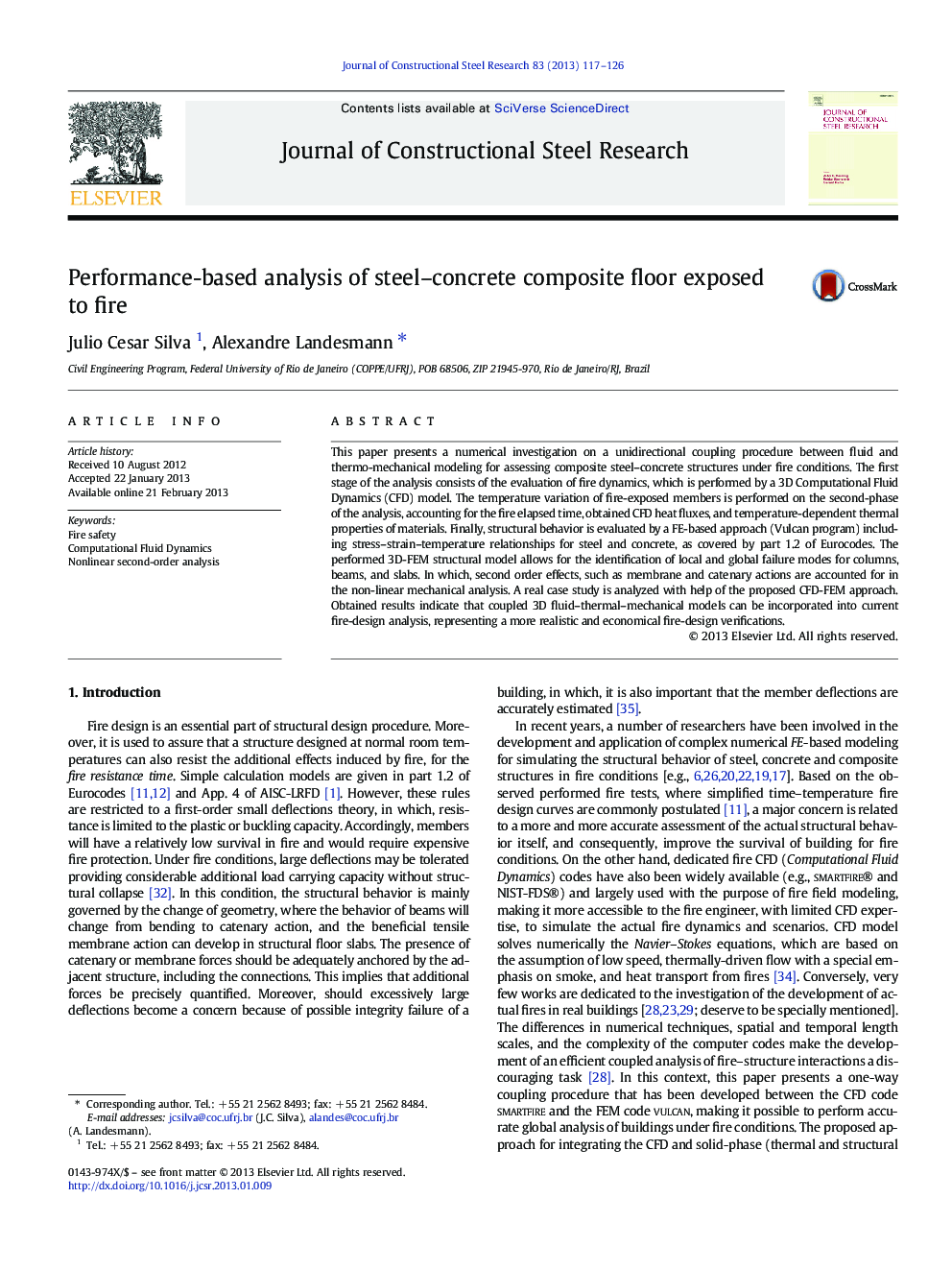| کد مقاله | کد نشریه | سال انتشار | مقاله انگلیسی | نسخه تمام متن |
|---|---|---|---|---|
| 285050 | 509177 | 2013 | 10 صفحه PDF | دانلود رایگان |

This paper presents a numerical investigation on a unidirectional coupling procedure between fluid and thermo-mechanical modeling for assessing composite steel–concrete structures under fire conditions. The first stage of the analysis consists of the evaluation of fire dynamics, which is performed by a 3D Computational Fluid Dynamics (CFD) model. The temperature variation of fire-exposed members is performed on the second-phase of the analysis, accounting for the fire elapsed time, obtained CFD heat fluxes, and temperature-dependent thermal properties of materials. Finally, structural behavior is evaluated by a FE-based approach (Vulcan program) including stress–strain–temperature relationships for steel and concrete, as covered by part 1.2 of Eurocodes. The performed 3D-FEM structural model allows for the identification of local and global failure modes for columns, beams, and slabs. In which, second order effects, such as membrane and catenary actions are accounted for in the non-linear mechanical analysis. A real case study is analyzed with help of the proposed CFD-FEM approach. Obtained results indicate that coupled 3D fluid–thermal–mechanical models can be incorporated into current fire-design analysis, representing a more realistic and economical fire-design verifications.
► Coupling fluid–thermo-mechanical numerical procedure linking CFD and FEM models
► A real case study is analyzed with help of the proposed CFD-FEM approach.
► Provides reliable analyses of composite steel–concrete structures exposed to fire
Journal: Journal of Constructional Steel Research - Volume 83, April 2013, Pages 117–126